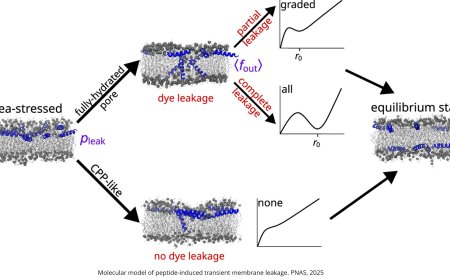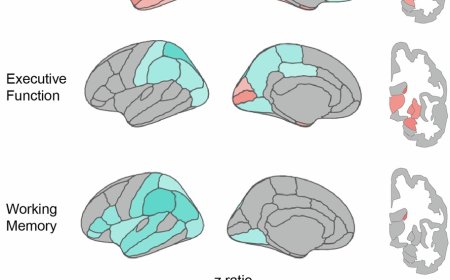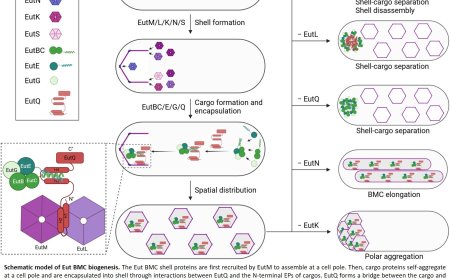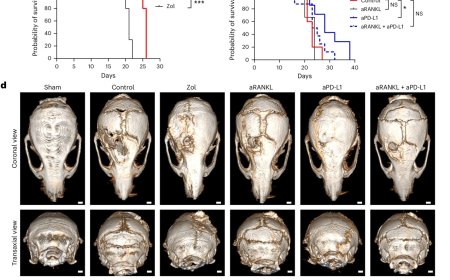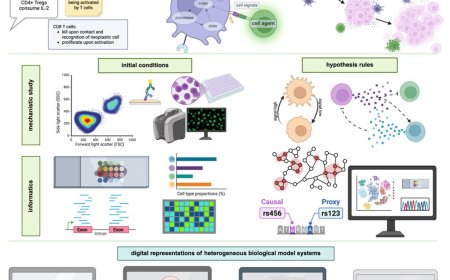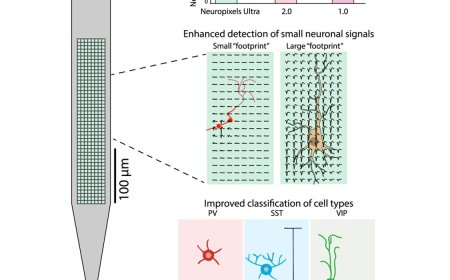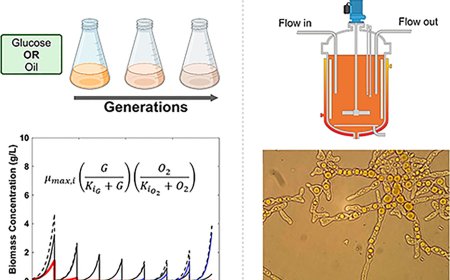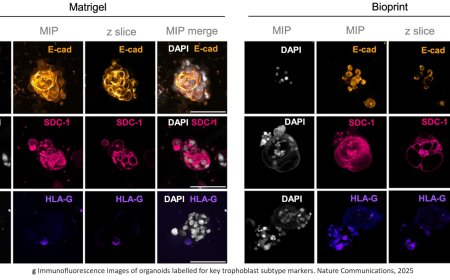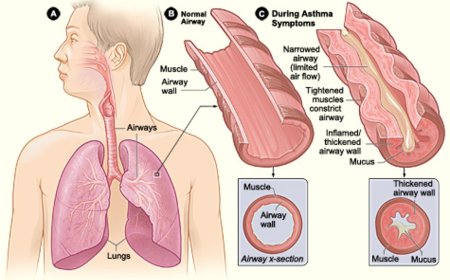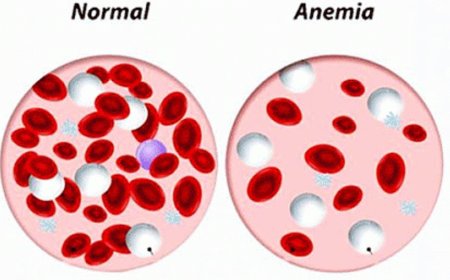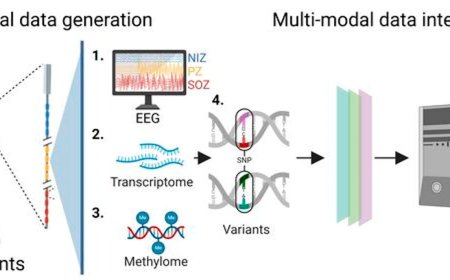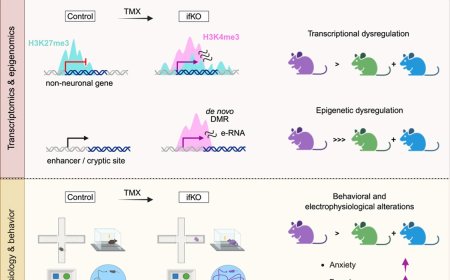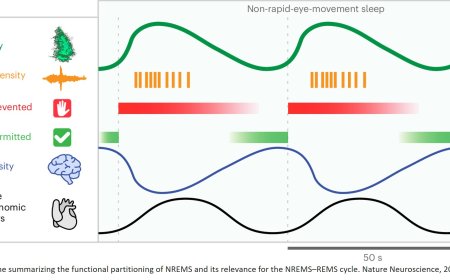How aggression affects vision in flies?
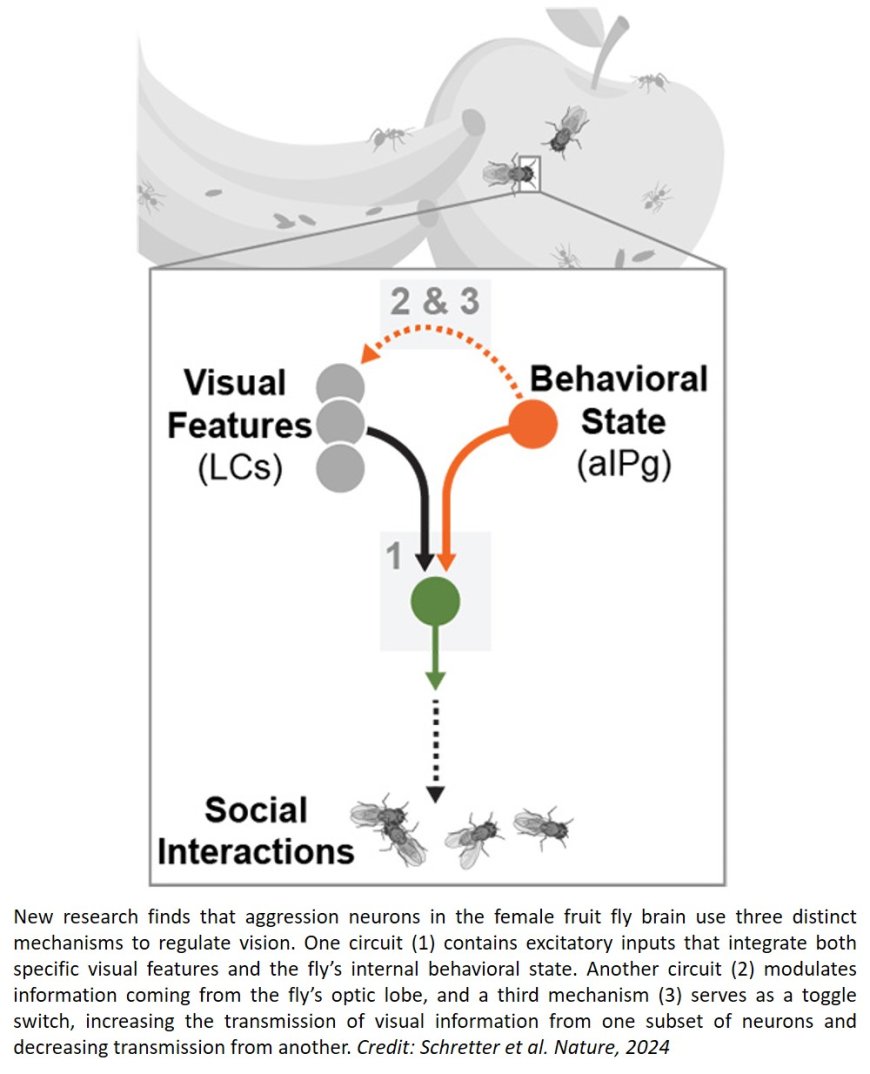
The new research uses pioneering tools to show how aggressive female fruit flies’ vision is regulated to focus on what’s important. Using the fruit fly connectome – a wiring diagram of all the brain’s neurons and their connections – and genetically modified flies, the researchers uncovered how the insects’ neurons and circuits work together to flexibly control visual information in different situations.
Uncovering how a social behavior like aggression controls vision in fruit flies at the level of neurons and circuits could provide insight into similar mechanisms in other animals, including humans. Increased knowledge about the link between sensory information and social behaviors could potentially help scientists better understand and treat neuropsychiatric and neurodevelopmental disorders.
“Understanding and modelling how multisensory cues come in and how that’s being integrated into social behaviors enables future research in other species and could facilitate the discovery of particular targets for treatment,” the lead author says.
The researchers had previously identified a group of neurons that promote aggression in female fruit flies, leading them to fight, and found that these neurons intersect pathways that transmit visual information. This provided a perfect jumping-off point for the scientists to use the connectome to examine the exact neurons and circuits the fly brain uses to adjust its visual attention based on its current needs.
Much like when driving on a busy highway, we need to pay attention to the cars around us rather than the scenery, female flies in a state of aggression must pay attention to the nearby fly they are about to fight rather than, say, looking around for food.
Using the fruit fly connectome developed, the team discovered how the aggression-promoting neurons are connected to neurons that regulate visual input. This suggests that the aggression neurons are moderating the flow of visual information so the fly can focus on what’s important.
Armed with this knowledge, the researchers then used genetically modified fruit flies to turn different neurons on or off, to further probe how this regulation happens.
The team found that the aggression neurons use three distinct mechanisms to regulate vision. One circuit contains excitatory inputs that integrate both specific visual features and the fly’s internal state. Another circuit modulates information coming from the fly’s optic lobe, and a third mechanism serves as a toggle switch, increasing the transmission of visual information from one subset of neurons and decreasing transmission from another.
These multiple circuit mechanisms give the fly freedom and flexibility to regulate its attention toward different parts of its visual environment, depending on the context. The team also found that analogous circuits are active in male fruit flies during courtship, suggesting that different social behaviors could share circuit mechanisms.
In addition to providing insight into how aggression affects vision, the new work provides a framework for using the connectome to identify the neurons and circuits that underlie social behaviors – information that would have been difficult to obtain without the wiring diagram.
